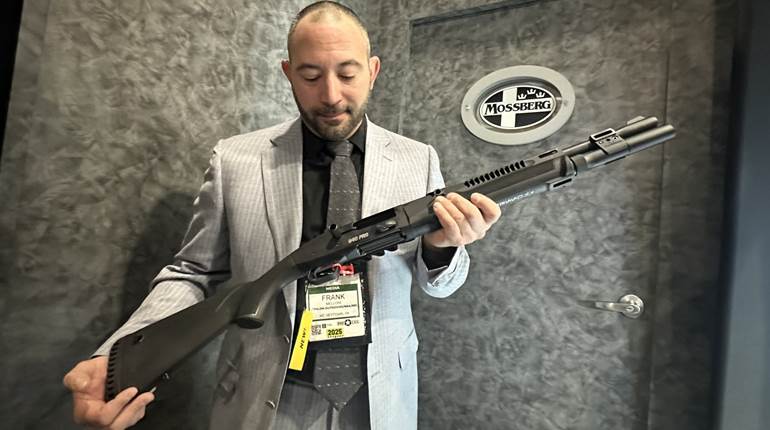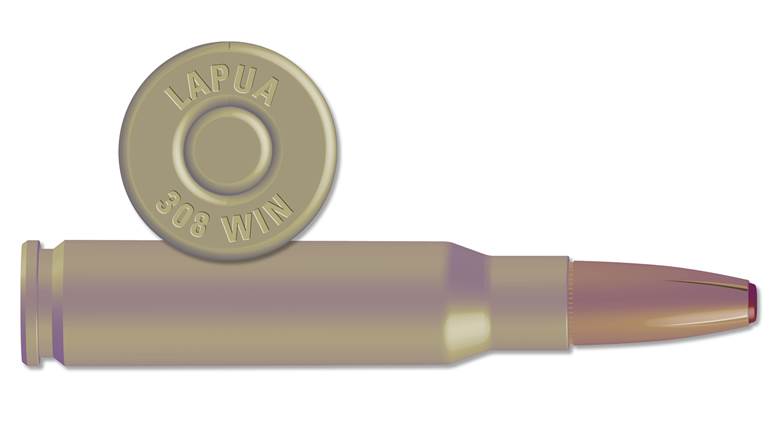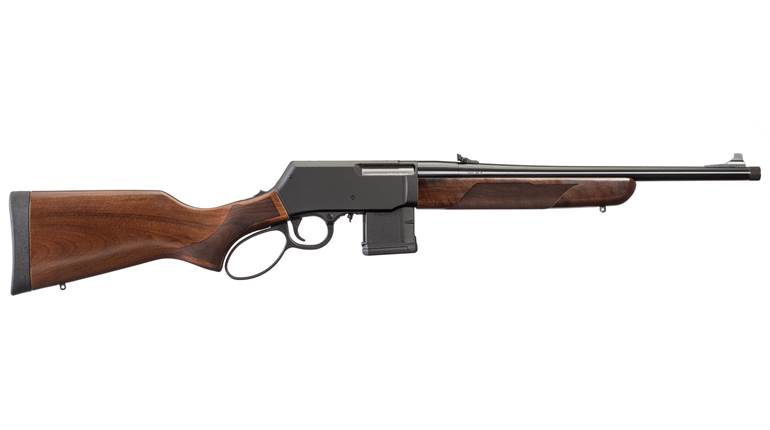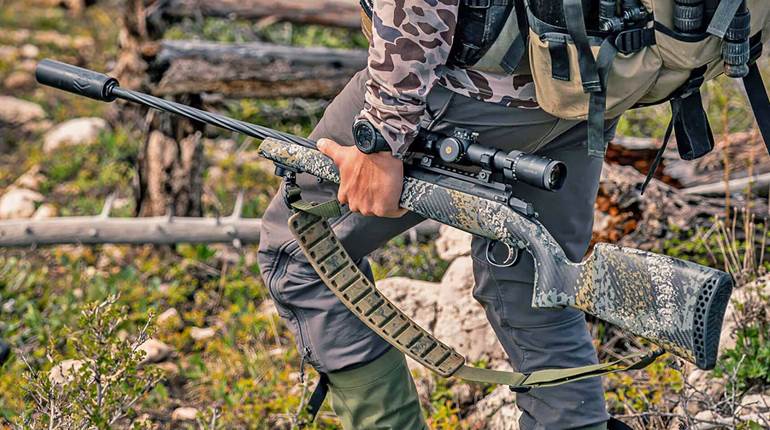
I've always considered a gun to be a tool, and like any other tool, I don't baby them. Their main purpose is performance, not aesthetics. Imagine a plumber responding to a call at your house and out of a great big toolbox he removes a velvet bag containing one wrench. As he delicately unsheathes it while taking a look at the nut that needs to be removed, he suddenly recoils out of worry of scratching his prized wrench. You’d think he was crazy, right? Well, your guns are no different.
Firearms are built to harness and direct the power of an explosion. A little water or some contact with the environment is not going to ruin them. The scratches on my guns have given each a unique character that has made them more special to me than any custom finish. Each scar on a buttstock or pistol frame has a story behind it, like the memory of a hunt of a lifetime, or a day on the range with some good friends. Some of these scratches are lessons learned or signs of personal growth, serving as a reminder of what not to do, or just exactly how far we have come with respect to firearm knowledge.
As I write this, the image of my first pistol comes to mind, with stark clarity. This M1911A1 has two distinct marks on it, both of which I still use when I instruct students at Renaissance Firearms Instruction. The first is on the right side of the slide, right below the rear sight. For hundreds of rounds, I swore that the pistol just needed adjustment to center up a group. Turns out I didn’t yet know the consistency in which human beings impart shooter error onto a target. After going nuts drifting the sight one way and then another, a friend and instructor introduced me to proper trigger finger placement,and all of a sudden that factory set position started to hit exactly where I wanted.
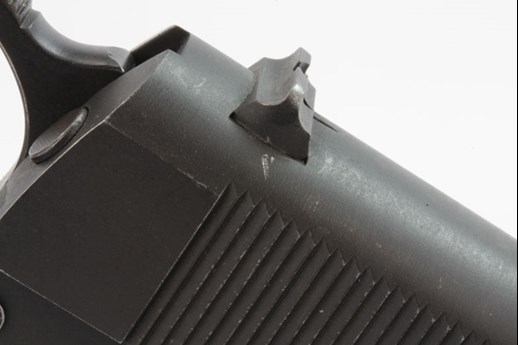
On the other side of that same handgun is evidence from my first attempt at a trigger job. Anyone who has tried this will recognize it the distinctive semi-circle scratch that starts behind the trigger and ends at the slide stop cutout. This process involves constant disassembly and reassembly as you test the trigger to see how light it has become as you stone and polish some of the internal parts. After a few too many hours at this task, fatigue and aggravation got the best of me, and without paying attention I scraped the slide stop against my frame during reassembly. Today the same gun serves as a teaching aide in our NRA Basic Pistol Course when we cover reassembly. While I can certainly have it re-parkerized, why would I wash away all this sentiment and humility?
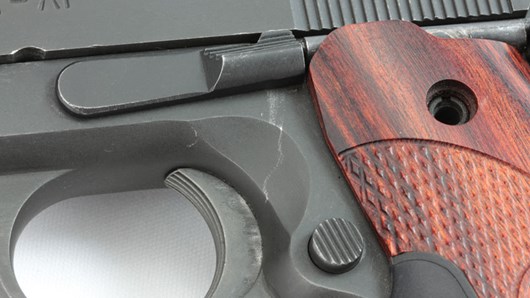
Not all marks remind me of negative experiences. Some make me smile ear to ear as I recall or retell a story of adventure. The right side of my Escort Magnum Supreme shotgun has been my muse on several occasions. This shotgun has always been my go-to squirrel gun and has knocked the nuts out of the mouths of countless tree rats over the years. On one particular autumn hunt I had just finished harvesting a pair of greys, and a third took off from the back of the tree across the forest canopy. As I chased him with my eyes in the sky I failed to notice the six-inch rock wall that quickly found itself between my legs, just as I was shouldering the shotgun. On the way down I managed to get a shot off and use the stock of the gun to break my fall, (well, partially at least). As I hit the ground seconds later, there was a “thud” about five feet from my head. I had gotten the squirrel! After telling the story to my friends at Escort, they offered a replacement stock for no charge, to which I declined. I replied with a grin, “Without this stock, nobody’s gonna believe the story!”
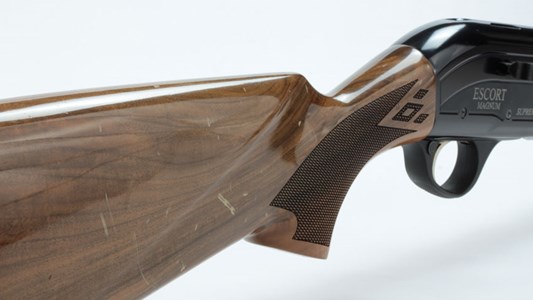
Often times I am in the woods pursuing larger quarry. This next battle scar, starring a Savage 111, comes from the time I dropped my first buck. After several unsuccessful years in my early hunting spots, I took to the road and established myself in an area of the Catskill Mountains. The terrain is rough, and the incline steep, but once at the plateau of the game lands, it feels like another world. Everything brought into the woods on one's back must come out, which is fine until meat is added to the equation. Well, of course, this year was going to be different as I bagged not only my first buck but a beautiful red fox less than an hour earlier. After packing up the deer for the freezer and fox for the taxidermist, I had far too much weight on my back and needed to free my hands for balance. With no other option, I latched my rifle to my tree stand, and made my way down the hill. All the while I could hear the rough aluminum rubbing against the synthetic stock—and I couldn’t have cared less.
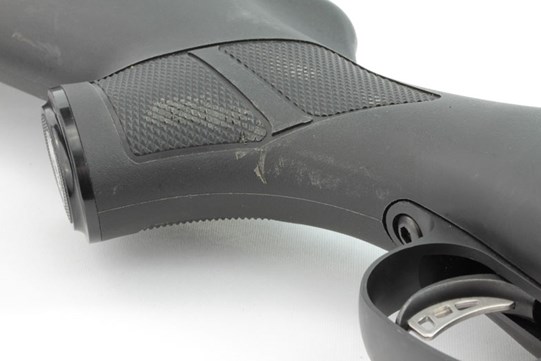
As hard as hunting and amateur gunsmithing has been on some guns, none get it worse than the “Classroom Firearms.” The classroom arms are the guns that don’t belong to me, but Renaissance Firearms Instruction. These guns are built to satisfy a student for just a few hours as they learn safety and the fundamentals of marksmanship. Nothing gets treated worse than something “borrowed,” especially as etiquette is still being taught. Although their finish might be worn and their tolerances not as tight as they once were if it hit the fan, these are the first guns I would go to. Why? Years of rough transport and use have taught me one thing: They are reliable. The same goes for the optics they bear. We use only optics that are going to hold zero under extreme conditions, as the guns are routinely returned to the shooting bench in a less-than-loving manner. These setups are the true workhorses of the safe, and should anything ever happen to the entire arsenal, these are the guns that I would miss the most.
By tossing aesthetics aside, I developed my knowledge base as well as my character. If an education on triggers and proper trigger squeeze cost me a few markings on a no-frills 1911, then that is a small price to pay. My lacerated shotgun stock has reminded me to look down on many occasions, once saving me from a would-be cottonmouth bite. As for my Savage 111, I still show it off, and I point to the scrapes. “This rifle got me more meat than I could carry out of the woods once,” I say. Sure, some folks’ barbeque guns might be clad with the finest Cerakote job in the land, but I’ll put my stories up against their finishes any day. For these reasons, I will never be afraid to take my gun collection out into the field or subject them to the rough service for which they are made. Call me crazy, but I want to use what I spent my hard-earned money on. This, my friends, is why I collect guns instead of stamps.













